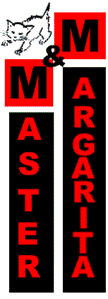 |
The Antonia Fortress
The Antonia fortress was built by Herod and named for Mark Anthony. (El'baum
100) It is mentioned in Josephus' Antiquities
15.8.5 and 15.11.4:
| Now on the north side [of the temple] was built a citadel, whose walls were
square, and strong, and of extraordinary firmness. This citadel was built
by the kings of the Asamonean race, who were also high priests before Herod,
and they called it the Tower, in which were reposited the vestments of the
high priest, which the high priest only put on at the time when he was to
offer sacrifice. But for the tower itself, when Herod the king of the Jews
had fortified it more firmly than before, in order to secure and guard the
temple, he gratified Antonius, who was his friend, and the Roman ruler,
and then gave it the name of the Tower of Antonia. |
Antiquities
18.4.3, Bellum
1.21.1 and 5.5.8:
| Now as to the tower of Antonia, it was situated at the corner of two cloisters
of the court of the temple; of that on the west, and that on the north;
it was erected upon a rock of fifty cubits in height, and was on a great
precipice; it was the work of king Herod, wherein he demonstrated his natural
magnanimity. In the first place, the rock itself was covered over with smooth
pieces of stone, from its foundation, both for ornament, and that any one
who would either try to get up or to go down it might not be able to hold
his feet upon it. Next to this, and before you come to the edifice of the
tower itself, there was a wall three cubits high; but within that wall all
the space of the tower of Antonia itself was built upon, to the height of
forty cubits. The inward parts had the largeness and form of a palace, it
being parted into all kinds of rooms and other conveniences, such as courts,
and places for bathing, and broad spaces for camps; insomuch that, by having
all conveniences that cities wanted, it might seem to be composed of several
cities, but by its magnificence it seemed a palace. And as the entire structure
resembled that of a tower, it contained also four other distinct towers
at its four corners; whereof the others were but fifty cubits high; whereas
that which lay upon the southeast corner was seventy cubits high, that from
thence the whole temple might be viewed; but on the corner where it joined
to the two cloisters of the temple, it had passages down to them both, through
which the guard (for there always lay in this tower a Roman legion) went
several ways among the cloisters, with their arms, on the Jewish festivals,
in order to watch the people, that they might not there attempt to make
any innovations; for the temple was a fortress that guarded the city, as
was the tower of Antonia a guard to the temple; and in that tower were the
guards of those three. There was also a peculiar fortress belonging to the
upper city, which was Herod's palace; but for the hill Bezetha, it was divided
from the tower Antonia, as we have already told you; and as that hill on
which the tower of Antonia stood was the highest of these three, so did
it adjoin to the new city, and was the only place that hindered the sight
of the temple on the north. And this shall suffice at present to have spoken
about the city and the walls about it, because I have proposed to myself
to make a more accurate description of it elsewhere. |
Where is it?  |